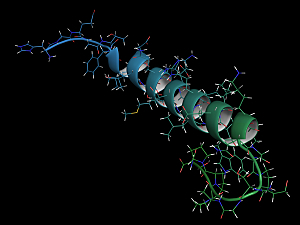Glucagon-like peptide 1 receptor agonists (GLP-1 RAs), as well as sodium glucose cotransporter 2 inhibitors, have demonstrated cardiovascular (CV) safety in patients with type 2 diabetes (T2D), and some members of these classes have proven to significantly reduce the risk of major adverse cardiovascular events (MACE).
In the EXSCEL clinical trial, a once-weekly injection of exenatide, an extended-release GLP-1RA, demonstrated CV safety in patients with T2D without and without cardiovascular disease, as reported in The New England Journal of Medicine, with a nearly statistically significant in reducing the risk of MACE (P=0.06) despite suboptimal patient adherence—patients received the drug for only 76% of the time they were in the trial.
Recently the FREEDOM Cardiovascular Outcomes (CVO) trial investigated ITCA 650, an osmotic mini-pump that delivers a continuous subcutaneous infusion of exenatide, in a broad population of patients with T2D who had, or were at risk for, atherosclerotic cardiovascular disease. This pre-approval cardiovascular safety trial met the FDA’s prespecified criterion for noninferiority to placebo for MACE with a similar safety profile to other GLP-1 RAs.
Christian T. Ruff, MD, MPH, director of general cardiology in the Division of Cardiovascular Medicine at Brigham and Women’s Hospital, Marc S. Sabatine, MD, MPH, the Lewis Dexter, MD Distinguished Chair in Cardiovascular Medicine and chair of the TIMI Study Group, and colleagues report the findings in Nature Medicine.
Methods
FREEDOM CVO was a phase 3, double-blind trial conducted at 402 sites in 26 countries. The 4,156 participants had T2D with hemoglobin A1c ≥6.5% at baseline and were either:
- High CV Risk: ≥40 years old with coronary artery disease, cerebrovascular disease or symptomatic peripheral arterial disease (76% of patients)
- Low CV Risk: ≥60 years of age with at least one other risk factor for MACE
Between April 8, 2013, and May 17, 2015, patients were randomly assigned 1:1 to receive ITCA 650 or placebo for nine months in addition to usual care. They were followed for a median of 16 months.
Cardiovascular Outcomes
In trials evaluating CV risk reduction with new antidiabetic therapies, the FDA criterion for noninferiority is that the upper limit of the 95% confidence interval of the hazard ratio for the investigational drug versus control must be <1.8. The results were within that margin:
- Primary outcome, the composite of CV death, non-fatal myocardial infarction, non-fatal stroke or hospitalization for unstable angina—4.6% of patients in the ITCA 650 group vs. 3.8% in the placebo group (HR,1.21; 95% CI, 0.90–1.63; P=0.004 for non-inferiority)
- Key secondary outcome, the narrower composite of CV death, non-fatal MI or non-fatal stroke—HR, 1.24; 95% CI, 0.90–1.70; P value not reported)
Individual components of the primary composite outcome were not significantly different between ITCA 650 and placebo. The same was true of the rate of death from any cause and the rate of hospitalization for heart failure.
Other Efficacy Measures
- HbA1c levels—Significantly lower in the ITCA 650 group than in the placebo group throughout the trial (mean absolute difference between groups, −0.84%; P<0.0001)
- Need for additional anti-hyperglycemic medication—Significantly lower with ITCA 650 (HR, 0.48, P<0.0001), including the need for insulin, which was initiated more than twice as frequently in the placebo group
- Bodyweight—Significantly lower in the ITCA 650 group throughout the trial (mean absolute difference between groups, −4.24 kg; P<0.0001)
Safety
ITCA 650 had a safety profile similar to that of other GLP-1 RAs, including an increase in gastrointestinal adverse events that are considered class–related. More patients in the ITCA 650 group discontinued treatment due to adverse events (12.5% vs. 4.8% with placebo; P<0.0001). Rates of serious adverse events were similar in the two groups.
The occurrence of major hypoglycemic events was similar between ITCA 650 and placebo, but minor hypoglycemic events were more frequent with ITCA 650 (9.2% vs. 4.2%; P<0.0001).
The Path Ahead
Continuous infusion of exenatide with ITCA 650 has several potential advantages over immediate- and delayed-release formulations and other GLP-1 RAs. ITCA 650 may permit maintenance of a consistent blood concentration of drug and reliable daily control of blood glucose levels, resulting in increased patient adherence and compliance. A larger CV outcomes trial is needed to more precisely define the CV effects of ITCA 650.</p>
